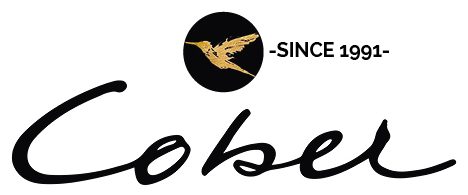What exactly are Diamonds?
Undisputed leading! with a hardness that is 980 to 1020 times harder than the next highest mineral in hardness, namely sapphire or ruby. It is merely crystallized carbon.
Diamonds are formed at least 30 kilometers deep in the earth. With volcanic eruptions they reach the earth’s surface. but at temperatures above 1500° C. diamonds burn back to uncrystallized carbon. What a bummer. So it needs a protective layer to come to the surface. Diamonds that surface have used a protective jacket of the mineral kimberlite for this purpose. Diamonds are the hardest natural material on our earth. However, diamonds are not invulnerable. A (very) hard blow to a diamond (in the right direction) can cause a diamond to split.
Rare?
In ancient times, diamonds were extremely rare.
Maharajas, kings and rulers were seduced by the beauty and extreme hardness of diamonds. After India and Brazil, it was mainly southern Africa that became known as a finding place for diamonds. Throughout southern Africa and especially in Namibia, they found the stones simply on the ground and on the beach. The diamond rush was then a fact. Later in history, they dug holes deeper than a kilometer to find diamonds.

Nowadays, people say that excavating diamonds is profitable only when the concentration of diamonds exceeds 1 in 20 million. In other words, 1 gram of diamond (=5 carats) on 20 tons of stone. Then we’re not even talking about quality. Pure diamonds sparkle harder than stones with inclusions, and white diamonds have an incredible attraction to people.Now it is becoming really rare.
In recent years there has also been a lot of interest in colored diamonds. Beautifully intense pink, yellow or even orange diamonds are even more rare than their white variants. Huge sums are being paid at auction houses around the world for large colored diamonds and the diamond world is on its hind legs when a new mine is found somewhere with fancy colors.
Quality
People find the diamonds in our earth and then judge the color and purity. The market determines a price for the rough stones and then a certain price rolls out of that for polished diamonds. High quality diamonds are rarer than those of lesser quality. Pure diamonds sparkle more beautifully than impure diamonds and bright white stones are valued more than those of an intermediate color. (They are also less rare) This as far as natural products are concerned.
Polishing is human work. The degree to which the facets are polished and the relationship between them determine the final brilliance of a diamond. An important factor in determining the value of a diamond.
Cut
At Cober, we choose only very first quality diamonds. This applies to the purity and color of our diamonds, but first and foremost to the quality of the cut, also known as making. Diamonds can be cut in different polishes. The most common cut is Brilliant. (Brilliant is also another word for perfect, think of a brilliant student) This is not for nothing because a perfect Brilliant cut diamond returns 100% light shining into it from above. In other words, it’s like a mirror You can’t see through it from the top (if properly cut). Princess cut is a close second and, like Brilliant, a beautiful sparkling stone. Lovers love Baquette, Oval and Marquis. There are countless more cuts. If you are more interested in these we can give you much more information about them. For several examples, you can see beautiful applications at our collection.
What is the Kimberly Process?
This is a collaboration of 75 countries that together ensure that so-called conflict diamonds cannot become the financing of insurgents against legitimate governments. The trade in these stones has in the past led to devastating conflicts in countries such as Angola, Ivory Coast and Sierra Leone. Cober Goldsmiths guarantees that diamonds you purchase from us do not originate from these conflict zones and provides a written guarantee to this effect. All diamonds you buy from us are certified.
cannot become the financing of insurgents against legitimate governments. The trade in these stones has in the past led to devastating conflicts in countries such as Angola, Ivory Coast and Sierra Leone. Cober Goldsmiths guarantees that diamonds you purchase from us do not originate from these conflict zones and provides a written guarantee to this effect. All diamonds you buy from us are certified.
Prices
Through years of experience and contacts around the world, you can purchase certified diamonds from us at very attractive prices. Diamonds from approximately 0.30 carats to 1 carat generally come with a certificate from IGI (International Gemological Institute). Purchases of larger diamonds we mainly supply with certificates from HRD (High Diamond Council) or GIA (Gemological Institute of America). For more information please contact Mr. Vincent Cober. T: 0412-651450 E: V.Cober@cober.nl

